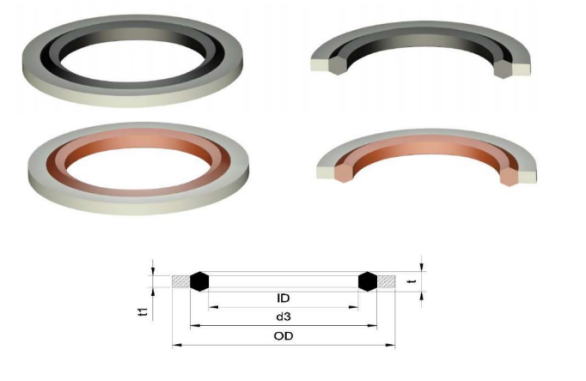front drive axle inner shaft seal
Understanding Front Drive Axle Inner Shaft Seals Importance, Function, and Maintenance
When it comes to the intricate machinery of automotive vehicles, every component plays a crucial role in ensuring performance and reliability. Among these components, the front drive axle inner shaft seal is an unsung hero that often goes unnoticed until a problem arises. In this article, we will delve into the importance, function, and maintenance of the front drive axle inner shaft seal, aiming to give readers a comprehensive understanding of this critical part.
What is a Front Drive Axle Inner Shaft Seal?
The front drive axle inner shaft seal is a type of sealing device that sits at the interface where the front axle connects to the differential. Its primary role is to prevent diff oil from leaking out while keeping contaminants like dirt and moisture from entering the differential. This ensures that the axle remains lubricated, which is essential for the smooth functioning of the vehicle's drive system.
Why is the Inner Shaft Seal Important?
The importance of the front drive axle inner shaft seal cannot be overstated. Here are a few key reasons
1. Leak Prevention One of the major functions of the seal is to prevent lubricant leakage. If the lubricant escapes, it can lead to insufficient lubrication of the axle components, resulting in increased friction, overheating, and eventual failure.
2. Contaminant Protection The seal protects the internal components from debris, dirt, and moisture. Contaminants can cause significant wear and tear, leading to costly repairs and replacements.
3. Optimal Performance When the inner shaft seal is functioning correctly, the entire drive system operates more efficiently. This efficiency translates to better fuel economy and improved vehicle performance.
4. Cost-Effectiveness A functioning inner shaft seal can save you money in the long run. Preventing leaks and protecting components from damage means fewer repairs and replacements, ultimately reducing maintenance costs.
Signs of a Failing Inner Shaft Seal
front drive axle inner shaft seal

Despite its durability, the front drive axle inner shaft seal can wear out over time due to factors like age, heat, and environmental exposure. Here are some signs that may indicate a failing seal
1. Oil Leaks One of the most apparent symptoms is oil leakage from the area around the axle. If you notice fluid spots where your vehicle is parked, it's time to check the seal.
2. Increased Whining Noise If you hear a whining or grinding noise coming from the front axle during operation, this could be a sign of low lubricant levels due to a leaking seal.
3. Contaminated Lubricant If you remove the differential cover and notice that the lubricant is dirty or contaminated, this could indicate that the seal has failed, allowing dirt and moisture to get in.
Maintenance and Replacement
To ensure the longevity of the front drive axle inner shaft seal, it's essential to perform regular maintenance. Here are some tips
1. Regular Inspections Have a mechanic inspect the seals and the differential at regular intervals. Early detection of leaks can save you from significant repairs in the future.
2. Lubricant Levels Check the levels of differential lubricant regularly. If you notice a drop, investigate for leaks.
3. Timely Replacement If your mechanic identifies a failing inner shaft seal, replace it as soon as possible to avoid further damage. It's often a relatively inexpensive repair that can save you from much costlier fixes down the line.
Conclusion
The front drive axle inner shaft seal may not be the most glamorous component of a vehicle, but it plays a pivotal role in the overall functioning and longevity of the drive system. By understanding its function and importance, monitoring for signs of wear, and ensuring regular maintenance, vehicle owners can greatly enhance their vehicle’s performance and reliability. Ultimately, investing time and resources into the care of seemingly minor components like the inner shaft seal pays off by ensuring that your vehicle operates smoothly and efficiently for years to come.
-
The Ultimate Guide to Car Repair Kits: Tools and Essentials Every Driver Should Own
News Aug.01,2025
-
The Complete Guide to Oil Pan Gaskets: Sealing Engine Leaks the Right Way
News Aug.01,2025
-
Preventing Oil Leaks: A Complete Guide to Oil Pan Gaskets and Drain Seals
News Aug.01,2025
-
Everything You Need to Know About Oil Pan Gaskets and Drain Plug Seals
News Aug.01,2025
-
Essential for Car Owners: How to Use a Car Repair Kit to Deal with Minor Breakdown
News Aug.01,2025
-
Comprehensive Guide to Engine Oil Sump Gaskets and Related Seals
News Aug.01,2025
-
The Ultimate Guide to Boat Propeller Bearings and Trailer Wheel Bearings
News Jul.31,2025
Products categories















